
Flour quality and type are the essence of good bread. It all begins with buying the right kind for your recipe!
Getting good quality flour is the easiest way to improve the way your bread will look and taste. Flour from supermarkets tends to be very white, often old, lacking in taste and natural enzymes, and, most important, not very useful for bread baking (at least over here in Holland).
We get our flour from a windmill, which gets its wheat from the center of The Netherlands. They then grind it on big stones, powered by wind. The flour has an EKO (organic) seal of approval, a very nice yellowish hue from the natural carotene and it tastes of fresh grass and wheat berries. The flour is so fresh we have to ‘store’ it for 2 weeks to improve the baking properties and water absorption ability.
We are very lucky to have found great bread flour so close to home. How much difference it makes is also shown in our flour experiment for which we baked the same loaf with both high quality flour from a mill and cheap supermarket flour.
This flour overview teaches you more about flour types and how they are referred to in different countries. It can help you buy the right type of flour, no matter what country you bake in.
| Ash | Protein | US | German | French | Italian | Netherlands |
|---|---|---|---|---|---|---|
| ~ 0.4% | ~ 9% | pastry flour | 405 | 45 | 00 | zeeuwse bloem |
| ~ 0.55% | ~ 11% | all-purpose flour | 550 | 55 | 0 | patentbloem |
| ~ 0.8% | ~ 14% | high gluten flour | 812 | 80 | 1 | tarwebloem |
| ~ 1% | ~ 15% | first clear flour | 1050 | 110 | 2 | gebuilde bloem |
| > 1.5% | ~ 13% | whole wheat flour | 1700 | 150 | Farina integrale | volkorenmeel |
Ash content explained
To establish the ash content of flour a fixed amount of the flour is burned and what is left after this process is the ‘ash’. The amount that is left is expressed as a percentage of the original fixed amount. The ash consist of minerals that are left after burning, so they do not combust.
It is a way of determining the quality / purity of the flour. A higher ash content indicates that the flour contains more of the germ, bran, and outer endosperm. Lower ash content indicates that the flour is more refined. As you can see in the table above, the whole wheat flour has the highest ash content.
German flour type numbers (Mehltypen) indicate the amount of ash (unburned mineral content, measured in milligrams) obtained from 100 g of the dry mass of this flour. Standard wheat flours range from type 405 for normal white wheat flour for baking, to strong bread flour types 550, 812, and the darker types 1050 and 1700 for wholegrain breads. There is also a type 1600 which fits between white wheat flour and whole wheat flour, it will give you a darker white bread.
French flour type numbers indicate the ash content (in milligrams) per 10 g flour. The numbers are a factor 10 lower than the German types. Type 55 is the standard, hard-wheat white flour for baking, including puff pastries (“pâte feuilletée”). Type 45 is often called pastry flour, and is generally from a softer wheat (this corresponds to what older French texts call “farine de gruau”). Some recipes use Type 45 for croissants although many French bakers use Type 55 or a combination of Types 45 and 55. Types 65, 80, and 110 are strong bread flours of increasing darkness, and type 150 is a wholemeal flour. Note that there is no type 40 French flour like the German type 405, the closest is type 45.
In the United States and the United Kingdom, no numbered standardized flour types are defined, and the ash mass is only rarely given on the label by flour manufacturers. However, the legally required standard nutrition label specifies the protein content of the flour, which is also a way for comparing the extraction rates of different available flour types.
British flour types for bread baking:
Stoneground strong wholemeal* 100% extraction rate* – 12-14% protein
Stoneground wholemeal 95% extraction rate – 12-14% protein
Strong white extraction rate 72-75% – 12 to 13% protein
Extra strong white extraction rate 72-75% – 14 to 15% protein
Plain white 72-75% extraction rate – 9 to 11% protein (can be use to replace Italian 00 flour for example, but less suitable for most bread baking and most often used for cakes and cookies / biscuits)
Brown 80% extraction rate – 12-14% protein
*Extraction rate: The amount of original grain left in the flour. These extraction rates are not often mentioned on the bags. To make white flour you sift out germ and bran. If you sift out all the germ and bran it’s about 28% and you end up with 72% extraction flour.
*We often use the term wholewheat (like in America) but it means the same as the UK term wholemeal, but wholemeal can also refer to other grains like wholemeal spelt flour. In Holland we call this ‘volkoren’.
In the Netherlands it is even harder to establish the protein content and ash mass as most bags simply state ‘Tarwebloem’ or ‘Patentbloem’. As a general rule all flour, both ‘Tarwebloem’ and ‘Patentbloem’, you can buy in supermarkets have a low protein content and will not bake great bread. We have found out, by baking and experimenting a lot, that most ‘Tarwebloem’ flours sold by windmills in The Netherlands work well for baking artisan breads.
Soft wheat with lower protein content and less gluten is used for pastry. Hard wheat with higher protein content and more gluten is used for bread.
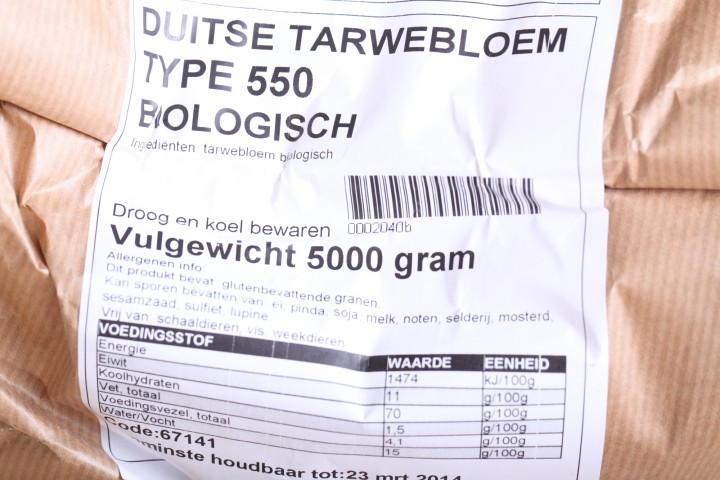
In general, as the extraction rate of the flour increases, so do both the protein and the ash content. However, as the extraction rate approaches 100% (whole meal), the protein content drops slightly, while the ash content continues to rise. Apart from the extraction rate itself the wheat can be of the soft or hard type. Hard wheat (usually hard spring wheat) has a higher gluten content (between 11% and 13%) and is excellent for baking bread. Soft wheat has a lower gluten content (between 9% and 11%) and is often used in all purpose flour and pastry flour which gives a more crumbly texture. Soft flour is usually divided into cake flour, which is the lowest in gluten, and pastry flour, which has slightly more gluten than cake flour. To make things even more complex, you can make whole wheat flour from soft wheat and patent flour from hard wheat and vice versa.
The English word for “flour” is originally a variant of the word “flower”. Both derive from the Old French fleur or flour, which had the literal meaning “blossom,” and a figurative meaning “the finest.” The phrase “fleur de farine” meant “the finest part of the meal,” since flour resulted from the elimination of coarse and unwanted matter from the grain during milling.
‘Dutch’ flour glossary
| Flour | Description |
|---|---|
| 00 bloem | Very fine Italian flour made of hard- or soft wheat. |
| Amerikaanse patent | A high protein content wheat flour, so very high in gluten. Found in Dutch bakeries under the name ‘lely’. |
| Bread flour | Usually to indicate a high protein content wheat flour (around 13%), so very high in gluten. |
| Durum | Triticum Durum, a wheat type with high protein content growing in warm areas. The germ has a yellow hue. Often used for Italian pasta. |
| Franse bloem | Very fine flour of only the germ and the endosperm. Often used for French baguettes. |
| Gebuilde bloem | Fine flour with only a part of the bran (usually has an extraction of 80% and 85%). |
| Grano Tenero | Soft wheat, low in gluten. Available in different extractions. |
| Grano Duro | Hard wheat, high in gluten. Available in different extractions. |
| Griesmeel | Coarse ground grains, for example wheat, spelt, corn or rice. |
| Kiem | Germ, the seed for a new plant, contains B vitamins, some protein, minerals and healthy oils. |
| Manitoba | A Canadian high protein content wheat flour, so very high in gluten. |
| Meellichaam / Meelkern | Endosperm, contains starch, protein, some vitamins and minerals. This is the food source for the germ to grow into a new plant. |
| Patentbloem | Very fine wheat flour without germ and bran. There is a big difference in quality between brands. |
| Patisserie bloem | Zeeuwse bloem or pastry flour. Very finy white flour with a low gluten content. |
| Semolina | Coarse ground grains, often from durum wheat. |
| Semolina rimacinata | Fine ground grains, often from durum wheat. |
| Tarwebloem | Fine ground wheat. Whiteness is between ‘patentbloem’ and ‘tarwemeel’. |
| Tarwemeel | A blend of ½ bread flour, ½ whole wheat, used in ‘tarwebrood’. |
| Volkorenmeel | The coarse ground complete wheat grain, contains the whole kernel, used for ‘volkorenbrood’. |
| Zachte bloem | Triticum Sativum, soft wheat flour with low to medium protein / gluten content. |
| Zeeuwse bloem | Fine flour with low gluten content, used for cookies and pastry. |
| Zemel | Bran, protective outer shell. High in fiber and B vitamins. |



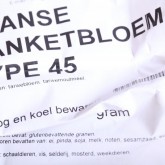
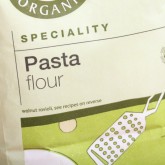
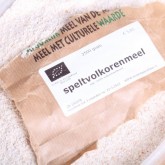
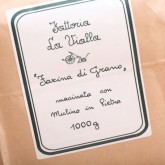
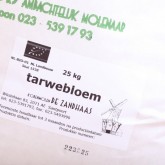
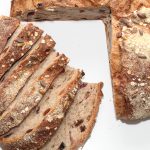

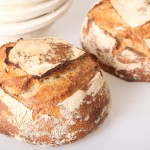
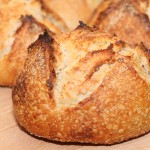
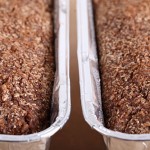

Carrol Lindsay says
I never realized there was so much wisdom in flour. I got sick in 2014 after a hospitalization. As I continue to heal I see a huge difference in and outside my body for which I am grateful. And now I’ve a lot of Dr. Axe wisdom in using a variety of gluten free and healthy flour choices in my cooking.
Weekend Bakers says
Thank you Carrol, for sharing this with us. Wishing you lots of happy and healthy baking and a peaceful and joyous Holiday season.
April says
Hi, I am an American living in Holland. When I try to make my cake recipes or cookie recipes from America.they really do not turn out here. Do u know of a flour that is similar to USA flour? Also I make American biscuits here and they are completely flat and course compared to when I make in America. Any help would be appreciated
Weekend Bakers says
Hi April,
Can you tell us if there are any other ingredients (additives) added to your American flour or if it is just flour?
Karl A Nelson says
What is with the term “wheat berry”? Come from many generations of grain farmers. Never heard of grain being called a “berry” except by those in the “foody”industry.
Weekend Bakers says
Hi Karl,
Good question, being Dutch we have no idea and have not heard much about a Dutch equivalent yet (it would be ‘tarwebes’). Maybe the answer lies in the fact that it is botanically speaking, a type of fruit called a caryopsis?…and you are probably right about the foody, trendy part…
On the one hand many people are claiming wheat is bad for you and on the other hand this ‘wheat berry’ which is the whole wheat grain, would have this aura of being really healthy.
Mariachiara says
Hi,
Thank you for this very useful article on flour. I think someone should write a comprehensive book on the different types , all flours of the world and their usages- there is no such book yet anywhere (I’ve been searching for ever) and it would be a great hit!
In Italy they also mention the W factor to define the protein content of a flour. They are starting to mention it on packets of flour sold in supermarkets. ..W350, W170, W260…I think for making pizza dough with a long fermentation period the W number should be high, but here is where the confusion starts as I live in the UK and I’m yet to figure out what a W350 or W260 would be. Any clues? Thanks. Mariachiara
Weekend Bakers says
Hi Mariachiara,
As we understand it, the letter W with number is an indication of the ‘strength’ of the flour. W170 indicating weak flour for pastry / biscuits and anything above 350 as very strong flour (to add strength to weaker flours and also to be used in enriched dough with longer proofing times for instance).
From W180 to W260 is average flour / plain flour
From W260 to W350 is strong flour used fro bread and pizza.
So both W260 and W350 could be used for pizza, depending on the recipe of your dough which one you would choose.
Hope this helps.
Have a lovely Easter weekend!
Ed & Marieke
Dziadziu says
Hi Marieke and Ed
I’ve made rye bread three times with a new recipe. The first result was perfect; I followed the recipe exactly. And then…………on recommendation I added a little pickle juice to replace some of the water……not much……10-20%. The result was a flatter less presentable loaf. Did the pickle juice weaken the gluten or inhibit the yeast? It was tasty but the loaf spread out on the stone instead of being taller. It seemed to rise ok but didn’t have enough structure to support the height of the first loaf. My bread flour is 14.2% protein high gluten. Any thoughts? Thanks from NJ/USA
Still learning, Dziadziu
Weekend Bakers says
Hello Dziadziu,
You are right, the juice inhibits the yeast in this case. It used to be so that people pickled their own food and that the juice from this had fermenting properties. Nowadays if you take juice from a pickle jar, it very likely does not have these properties. So if you combine this juice with commercial yeast, it only inhibits the development of the loaf.
Greetings from Holland,
Ed & Marieke
Julia says
Goede Morgen Marieke & Ed,
Many thanks for your article, this is very useful! I am French and I have recently moved to Australia (after living in the Netherlands, Germany and France) and I am fond of baking pastries. However my two trials were real failures here and I am beginning to understand that flour is not necessarily similar in all countries, neither is butter, cream, sugar, etc. The humidity rate doesn’t help either. I need to adapt most of my recipes.
I believe the UK standards described in your article could be an indicator for the Commonwealth countries. I will try to build my own chart. Again, many thanks, this is very valuable!
Julia
PS : if anyone has already worked on equivalences between France / Australia, please share! julia_sydneysider@yahoo.com
Weekend Bakers says
Hi Julia,
You are a true global baker, that is so cool and interesting. Soon you will get to grips with the adaptations needed to bake well down under, we are sure. Australia is a country of baking enthusiasts so hopefully you will encounter some of them and they will be able to help you too. If you are able and willing to share any info on the Australian flour system, we would gladly add it to this posting of course.
Happy baking and living down under!
Marieke & Ed
Pamela says
Do you know if any of the windmills will ship to the United States? I imagine the travel wouldn’t be much of an issue if you have to store it for two weeks anyway. I’d love to be able to use Dutch flour!! Thank you!
Weekend Bakers says
Hi Pamela,
Yes you are right it would be very well possible, but we are not sure any of them actually do it. We think this one has the highest ‘rate of success’ because of their extensive assortment and ‘presence’ on the web (though non of them including this mill have an English website) :
www.weekendbakery.com/posts…n-holland/
We would suggest just sending them a message and ask:
www.de-zuidmolen.nl/contact.html
Hope it will work out and you will get your Dutch flour.
Greetings from Holland,
Ed & Marieke
Rudolph says
We are trying to find the english name for what one calls in holland :amerikaanse patent bloem,to make the best sponge cake,that is cake whithout butter,there should be absolutely no fatty substances in this mixture to get the best results,could you help us ?
Weekend Bakers says
Hi Rudolph,
We would think what you are referring to is called ‘cake flour’ in the US, it is very low in protein (around 8%) so very good for cake.
Isabel says
Hi,
Thank you for this comprehensive review of flour types! I was wondering which flour type you suggest for making baguettes?
-Isabel (U.S.A)
Weekend Bakers says
Hello Isabel,
Thank you very much. We would suggest the strong white extraction rate 72-75% – 12 to 13% protein (very close to what we use over here). This is a great flour to start with, but you can of course try different flours and brands (after you get familiar with the recipe) and see which result you like best.
Happy baguette baking
Jessie says
So, what do you call cake flour in dutch? Or what is the discription of cake flour? Because cake flour is not the same as pastry flour
Weekend Bakers says
Hi Jessie,
This is a very good question and I will try to explain. We do have ‘cake flour’ in Holland but it is a product we would never use and probably not the same as your cake flour. First of all the name in Dutch is confusing and wrong for anyone knowing a little bit about flour and baking. The product is called ‘cakemeel’ which is very odd because the term ‘meel’ is always used to indicate a product is wholemeal. Finer white flour is called ‘bloem’ in general. Even more odd because this product is recommended to make your cake as light and airy as possible, lighter than cakes made with normal ‘bloem’. So the absolute opposite of ‘meel’.
Cakemeel in Holland is a product very much like self raising / rising flour but with added salt and (artificial) flavor like vanilla or lemon and sometimes even more additions. So we and many other bakers would always make our own cake flour, because this way we know what goes in it. We would use fine flour (patentbloem) and add our own baking powder and (natural) flavor when baking cakes.
Greetings,
Marieke
maria says
Hi there. I’m new to the Netherlands and trying to figure out the flours. I thought that patentbloem is for bread and tarweblowm for cookies. Is that wrong? Is patentbloem for pizza and bread or not? I am so confused reading your list now.
What I would like to ask in essence, is which flour is best for bread, pizza brioche etc here in the Netherlands, which one is for cakes, cookies, tarts, and if I can find it in a regular super market? I would be grateful for your reply and help with this.
Thank you!
Weekend Bakers says
Hi Maria,
Welcome to our country, hope you already feel at home a little bit. In general it is the other way around, tarwebloem is for bread and patent for cookies. The amount of protein in the flour is also very important, but unfortunately seldom mentioned on the package in Holland. The quality of the flour can differ a lot. We would always suggest to go to a mill to get good flour and till the miller what you want to bake. In supermarkets there’s also flour to be found, but you have to try different brands and types to see what you like. The organic wheat flour (biologische tarwebloem) from Albert Heijn is a good starting point, we think, or one of the organic food stores, though flour can be much more expensive there, also compared to the mills. We also have a list of mills that might come in handy: www.weekendbakery.com/posts…n-holland/
For pizza you can also use the tarwebloem, or you might come across some deli shops that sell Italian flour.
You can also order online with some mills, De Zuidmolen for example, that sells Italian, French, American and German flour.
Mills also sell flour, like the Zeeuwse bloem that is excellent for cookies, and good quality rye flour, that you will never find in any supermarket.
Hope this helps, but please just ask if you want to know more.
Groetjes en veel bakplezier!
Ed & Marieke
maria says
Thanks so much for your reply! I have looked at all the packages of flour that I have and noticed that they do mention the amount of protein per 100 grams of flour. That, I suppose, shows the strength of the flour, correct? And I found that for different patentbloemen, there are 10-12 g of protein per 100 g. which is a lot considering that according to what you mention that flour is not appropriate for bread. Whereas, tarwebloem, had about 10 g protein per 100g flour. So it’s still a bit confusing. 🙂 I also found at one supermarket, the flour brand Soubry, which has strong white bread flour and whole wheat bread flour. Have you heard of this brand? Do you have any experience with it? I used it in a loaf of bread the other day and I was really happy with the result. As for the mills, I surely have to visit one and test out their flour too. Look forward to your reply and wishing you a nice evening.
Weekend Bakers says
Hi Maria,
Yes, you are correct. The 10% for the tarwebloem is low compared to what we usually find and use as tarwebloem for bread baking (12 or 12.5%). Patentbloem with 12%… also confusing because the norm would be 9 to 10%. Most important is that you need a certain strength and quality to get a good loaf. In the past, quite some years ago, we used Soubry, but it would be hard to compare this with what you are using now.
The thing that counts is your result and the fact that you are happy about it. We do have some entertaining posts about flour and the difference the quality can make for bread baking:
www.weekendbakery.com/posts…nt-part-1/
and
www.weekendbakery.com/posts…ent-mills/
So flour from different mills also turned out different, but mostly all good, while very cheap supermarket flour really disappointed in this test.
So it is a good idea to shop around and try different things, visit a mill if you can and see what works for you.
Happy baking and flour shopping and just ask away if needed!
Aman da Walker says
What should I look for when bnujying flour for breadmaking in Portugal, preferably wholemeal or spelt?
Weekend Bakers says
Hello Amanda,
We are not familiar with the names and types of flour in Portugal. We would suggest, if possible, to go to a good mill or store and ask for advice on flour for bread baking. The important information to look out for is the percentage of protein in the flour and the quality and also ‘sell by’ date of the flour you buy, especially with wholemeal as it has a shorter shelf live than white flour, because of the oils still present in the flour.
Good luck with it!
Jinyoung says
Is it possible to make croissants with t45 ?
Weekend Bakers says
Hello Jinyoung,
Yes, we think it should work with t45 too, but to get closer to the t55 you could also blend it with 30% bread flour.
Cathi lauer says
I want to know the difference between sifted and consisted flour
Weekend Bakers says
Sorry, we have never heard of consisted flour.
Cate says
Thank you very much for this explanation on specifications of flours. I live in the US; you are correct that the labeling on flour lacks the fundamental information needed to select the best flour for the application. Fortunately, I live in an area centered on the wine and food industries. There is a local company that works closely with wheat farmers to produce quality flours. While their business is to the trade, they make many of their flours available to the public from a single storefront and online. They have been very helpful in providing me with specifications on their flours.
I would like to begin making croissants from your recipe and tutorial. I stock a variety of flours in my pantry. I think one of the following three might work, but I’m not sure which flour would be best.
Red Hard Winter Wheat Organic Unbleached 11.5% protein; 60% ash
Red Hard Winter Wheat Organic Unbleached Malted 11.5% protein; 60% ash
Red Hard Winter Wheat Organic Unbleached Malted 10 – 10.5% protein; 56% ash
Thank you again for sharing so much knowledge with the public. Your website is truly one of the best for baking enthusiast.
Weekend Bakers says
Thank you Cate for your comment. How great you have these options close to home, you are spoiled for choice it seems! We think the two malted options are both a good choice for the croissants, taking into account one other factor that you might be able to get some more info on. For this you can take a look at this article on gluten: www.weekendbakery.com/posts…ut-gluten/
Next to the gluten percentage, the ‘types’ of gluten and the ratio between them can be important when making a choice. For the croissants you want extensibility over elasticity and two types of gluten play a key role in this.
If this is a bit too much or you just want to give it a go, we would suggest starting with option 2, 11.5% malted.
Happy croissants baking and happy holiday season!
Cate says
Indeed I am very fortunate to have great baking resources so close to home. In my area we have the Culinary Institute of America, Francisco Baking Institute, and the San Francisco Cooking School. All the culinary schools offer baking and pastry classes for the home baker.
My favorite resource is the flour company. The family has been involved in milling and baking for four generations. The nephew was the captain of the US team for this year’s Coupe du Monde de la Boulangerie; the uncle is an accomplished baker and former teacher at the Culinary Institute.
They supply flours for several great bakeries in our area, including Acme and Tartine. They just started construction on a commercial kitchen at their store. Aside from baking classes, the kitchen will be available for rent to bakers running small scale businesses.
They are extremely helpful when I need advice on flours. Yesterday, the uncle spent a good thirty minutes helping me work through issues I’m having with a recipe.
I baked two batches of croissants from your recipe. I used the 10.5% malted and the 11.5% malted. It was my first time making a laminated dough, so your detailed instructions were extremely helpful. You were correct in that the 11.5% malted flour was the best choice. It produced a better dough and finished product. Since the dough was a bit stiffer, I expected resistance in rolling and folding. Yet it rolled out effortlessly.
Both batches had exceptional color (that malted flour browns beautifully) with crisp, flaky exteriors.
The crumb had open structure, but not the big honeycomb structure that is the hallmark of a well made croissant. I’ll be working to improve the crumb.
I plan to bake several more test/learning batches over the next couple of weeks. I’m going to use a preferment in my next batch. I certainly progressed, but there is still so much more to learn and experience with laminated dough.
This project gives me a lot of joy–and a lot of confidence in my baking. I thank you again for your tutorial. I’ve wanted to tackle laminated dough for several years, but hesitated at such a daunting task. The clarity of your instructions is an excellent introduction to the process. I’m confident come Christmas Day my croissants will be good enough to make the breakfast table.
Wishing you a joyful holiday and a wonderful New Year.
Cate
Escafon says
Gutteguttegut Is dit dan de plek om mijn hart te luchten over de povere collecties van de nota bene biologische winkels waar ik binnenstap, wel allerlei glutenvrije producten en modieus spul zoals spelt en noem maar op, maar een bloem van tenminste 11 procent eiwit is er niet, en dan het volkorenmeel, dat zat ook onder de twaalf procent eiwit, dan weet ik het volgens mij helemaal, volkorenmeel is al moeilijk luchtig te krijgen, en dan ook nog zo’n laag glutengehalte daar ga ik niet drie euro per kilo voor betalen. Als ik de informatie hierboven goed begrijp is dit volkorenmeel dus niet bijzonder geschikt om brood van te maken, dus ik vraag me dan af wat ze dan met dat volkorenmeel doen? Ik hoop toch niet dat ze daar koekjes van gaan bakken? arme kinderen denk ik bij mezelf dan, koekjes moeten niet gezond zijn. Enfin het blijft een beetje behelpen tot nu toe hier in amsterdam, ben uiteindelijk de Jumbo binnengestapt, want die winkel is wekelijk kolossaal dus wie weet. Ben uiteindelijk met een pak extra fijne patentbloem naar buiten gestapt, omdat die een eiwitgehalte van 12,0 gram aangaf, meer dan het volkorenmeel merkwaardig genoeg, en dus heb ik mijn keuze door het eiwitgehalte laten betalen. Ik heb het idee dat 12% patentbloem een redelijk witbrood kan opleveren, en volkorenmeel met 11, 2% niet goed kan zijn. Ik blijf zoeken en ga de volgende keer dat ik op bezoek ben bij mijn ouders in het noorden heel erg groot inslaan. Wel heb ik harde tarwe in de Marokkaanse winkel zien staan, maar die hadden alleen maar zakken van 5 kilo, dus dat doe ik ook niet zo snel om het even te proberen.
Matthijs Scaf says
Misschien heb ik bovenstaande enigszins overdreven, komt we4llicht door de heimwee naar Franse en vooral Italiaanse winkels, waar kwaliteit van levensmiddelen een stuk hoger gewaardeerd wordt dan hier in Nederland. in Frankrijk was een enorme keuze aan verschillende soorten meel. en ook in Italie moet het makkelijk zijn om meel in verschillende soorten te krijgen. Zie nu ook dat ik 1 en ander wat moet nuanceren, Toscaans brood, wat een zeer eerlijk en ambachtelijk product is wordt gemaakt van tamelijk “zwak” meel met een maximum aan het eiwitgehalte, geen minimum. Bevat ook tamelijk weinig water, maar smaakt enorm goed.
Weekend Bakers says
Wat leuk dat je jezelf weer ‘corrigeert’ 🙂
Wij zeggen de molen is onze beste vriend en als je een goede molenaar treft, kan hij je altijd vertellen wat er precies in het meel zit en ook waar het vandaag komt.
Maar we snappen wel wat je bedoelt.
Josephine Sulpizi says
I have an Italian recipe that requires “Farina della Manitoba” however it is not available in supermarkets in the province of Ontario. Different articles that I have read, mention that “Farina della Manitoba” is a very strong flour (with a W of 350). What Canadian flour can I substitute it with?
Weekend Bakers says
Hi Josephine,
We are no experts on what flour can be bought in Cananda. Officially Manitoba wheat comes from your country of course. If you want to substitute look for a high gluten ‘white’ flour (14% protein).
Josephine Sulpizi says
Thank you, I will look into that.
Josephine
Josephine Sulpizi says
With reference to my original question: what Canadian flour can substitute “Farina della Manitoba” I have just contacted a flour company in the area and was told that a high content of 14% gluten would be a bread flour. I’ll have to try the recipe to see if this bread flour would work.
Weekend Bakers says
Hello Josephine,
Now you mention this, you did not yet tell us what recipe you were going to make, other than it being Italian. We are just curious if it is indeed a bread of some sort. If it is something like our Panettone (see www.weekendbakery.com/posts…e-project/) you can indeed use this flour very well.
The Crusty Baker says
I have been in the bakery trade for well over 50 years and until today i have always used a flour for the purpose of the product i was making. For instance, i wouls use a flour directly manufactured for bread if i was creating a loaf of bread in the UK. In candad i would use a flour called Alberta 75 again a strong flour designed for bread. In bakery school we would use a pastry flour to make pastry of course and the same in Canada. Making cakes we would use a flour designed directly for cakes. But now since joining the EU everything has changed in the UK and something called All Purpose is now sold for anything. Plus now apparently a flour called Self Raising is now sold for making cakes yet many recipes do not NEED or require baking powder to which is sold as an additive to self raising flour. The quality is certainly NOT good enough to make pastry or good quality cakes. There used to be another flour called High Ratio flour. No longer available since the EU. This flour was used to make really high quality moist cakes that used more liquids in the batter. In Canada this product is also not available but a substitute could be utilized by adding an emulsifier and using ordianry cake flour. All this change has quite frustrated me causing my recipes to fail again and again to the point i am just about to give up. Thank gof Britain is coming out of the EU corruption.
Weekend Bakers says
Hello Crusty Baker,
In Holland we are almost unable to find good flour in the supermarket. Lucky for us a lot of mills offer a good selection of (organic) stone ground flour. If we need baking powder / to make self raising flour we make our own: www.weekendbakery.com/posts…ing-flour/
We know from experience what a difference good flour can make to bread and pastry. Hope you will be able to find a good place for quality flour (maybe something like Shipton mill would be worth a try).
Good luck with it and baking your own is still better than buying the stuff with all the additives we think.
natalie says
Hi, dank voor alle info. Ik woon in Azie, en kan hier slechts wat Amerikaanse of Australische Flour kopen. Maar hoe onderscheid ik nu ‘ Bloem’ en Meel’ in een supermarkt. Alles heet hier ‘ Flour’.
Is ‘Wholewheat Flour’, de gezondste optie ? ( en is dit dan bloem of meel ? )
Weekend Bakers says
Hallo Natalie,
Ja een hele uitdaging in het verre Azië. Wholewheat flour is volkoren tarwemeel, hetgeen betekent dat de hele tarwekorrel is gemalen en dus alle zemelen en kiemen nog in het meel zitten. Dat wordt dus altijd meel genoemd. Haal je die zemelen weg door het meel te zeven, dan krijg je bloem. Volkoren wordt als gezonder beschouwd omdat er meer vezels, eiwitten en vitaminen en mineralen in zitten dan in bloem. Een 100% volkorenmeel brood bakken levert een zwaarder en compacter brood op. Vaak maakt men ook combinaties van bloem en meel.
Succes ermee!
Bob Holden-Rushworth says
Hi ,thanks for so much information; I didn`t realize how “technical” flour can be !! The information on grades,names and content is very useful.
I need to choose a flour ,or mix of flours to make pasta. At the moment I am considering Semolina or Tarwebloem. Can you make any suggestions please? I live up in Kloosterburen, Groningen and will seek out a source of natural flour (ie : non-supermarket). We have several windmills locally (for example two in Winsum and one in Eenrum).
Groetjes , Bob.
Escafon says
Beetje off topic, maar ik heb in Italie gewoond en daar ook een aantal maanden in een restaurantkeuken gewerkt waar ik de verse pasta maakte, daar werd de pasta van gewone bloem (dezelfde als voor de pizzas) gemaakt. Droge pasta moet van harde tarwe gemaakt worden, en voor verse eierpasta gaat mijn voorkeur uit naar gewone bloem van zachte tarwe. Met harde tarwe wordt eierpasta mij een beetje te hard, dus ik zou voor lasagne tagliatelle etc gewone tarwebloem gebruiken, wat mij betreft maakt het soort bloem minder verschil dan met brood, wellicht omdat er per kilo bloem ongeveer tien eieren in verwerkt worden. Ik gebruik voor pasta meestal Turkse tarwebloem evenals voor pizza.
Escafon says
Correctie, ik heb geen idee waar de tarwe in die bloem vandaan komt het is een turks merk, Aytac , met een cedille onder de c, verkrijgbaar in iedere Turkse supermarkt.
Weekend Bakers says
Dankjewel Escafon voor al je tips en informatie!
En Bob, wij maken soms verse pasta en altijd van semolina en het resultaat bevalt ons wel, maar wie weet gaat het met tarwebloem nog beter zoals Escafon uit ervaring meldt. Misschien is het een goed idee beide opties eens te proberen en te kijken waar je voorkeur naar uit gaat.
Happy pasta making!
Sonja says
Hello,
A very informative site indeed. But whether it’s because it is very early in the morning, I need clarification on which type of flour I should purchase when making brioche. I’m only a beginner in the world of bread,let alone brioche. You’re recipe as well as others i.e Martha Stewart requires bread flour. Do I just use the patentbloem here which is purchased in major supermarkets to begin with or do I need to purchase an english brand stating that it is Strong bread flour. I found strong bread flour at Marks & Spencer,ideal for bread making. Thank you in advance.
Weekend Bakers says
Hello Sonja,
We use French type 55 flour for our brioche. If we look at the English flour equivalent then one good option to try would be a 50/50 combination of strong white bread flour and plain white flour (patent bloem) to get close to the same result and protein content of the French flour. You could also make brioche with just the strong white flour, which is a bit higher in protein, but for our recipe this will be fine too.
Happy brioche baking!
Gary W. Allen, PhD says
Very helpful information for an American expat living in Germany. BTW I wish I had a local flour mill like yours!
Weekend Bakers says
Thank you Gary,
Germany has excellent bread and bakers and they have to get their flour form somewhere, so there must be places to get the good stuff hopefully if you ask around…?!
Antje says
Hello Gary,
I don’t know where in Germany you are, but the members of the “Brotbackforum” have collected addresses and links to lokal German mills here: brotbackforum.iphpbb3.com/forum…t5742.html
Perhaps there is one in your vicinity. If not, try the links, many have online-shops.
Weekend Bakers says
Also thank you Antje, on our behalf, we would love to visit a German mill (and bakers) ourselves, now we live closer to the border.
Ed & Marieke
Joan says
A nice overview that really helps when baking. I just miss the UK flour explanation of strong or very strong flour. These are often mentioned in cookbooks. I would like to know more about this.
Weekend Bakers says
Hello Joan,
We can tell you a little bit about it. If we stick to bread baking these are the relevant British flour types:
Stoneground strong wholemeal* 100% extraction rate* – 12-14% protein
Stoneground wholemeal 95% extraction rate – 12-14% protein
Strong white extraction rate 72-75% – 12 to 13% protein
Extra strong white extraction rate 72-75% – 14 to 15% protein
Plain white 72-75% extraction rate – 9 to 11% protein (can be use to replace Italian 00 flour for example, but less suitable for most bread baking and most often used for cakes and cookies / biscuits)
Brown 80% extraction rate – 12-14% protein
*Extraction rate: The amount of original grain left in the flour. These extraction rates are not often mentioned on the bags. To make white flour you sift out germ and bran. If you sift out all the germ and bran it’s about 28% and you end up with 72% extraction flour.
*We often use the term wholewheat (like in America) but it means the same as the UK term wholemeal, but wholemeal can also refer to other grains like wholemeal spelt flour. In Holland we call this ‘volkoren’.
Maria says
HI again Marieke and Ed
Thank you for this great info…
Could you help?
Where does “atta flour” fit in above categories and can it be a suitable replacement for wholewheat flour?
Weekend Bakers says
Hello Maria,
We do not have much experience with atta flour ourselves (Only made chapati breads a few times) but we do think it can be used for other bread baking too and instead of (other) wholewheat flour.
You can find more info on the subject here: www.thefreshloaf.com/node/…atta-flour
Mark FLAJSNER says
do you know what the equivalents flour types in Denmark for the French T45 and T55?
Many thanks for any help
Weekend Bakers says
Hello Mark,
We are sorry but we do not know the Danish equivalents. Maybe you can ask a baker or miller in your neighborhood. Other than what comes closets for you to pastry flour and plain flour (as the English call it) with the corresponding protein percentages, we would not know any other way to describe it.
Good luck with it!
Lisa says
Is 405 for T45 and 550 for T55. You can find those in Germany easily.
Weekend Bakers says
Hi Lisa,
Thank you, so the Danish type indication equals the German then!
Yvette says
Hi!
I’ve recently fallen into the sourdough hole and I’m getting better at it (almost) every loaf 😉 I can happily say that within a few months time, I’ll be living in Santpoort, and can even walk to your favorite mill!
I do have a question regarding the type of flour. Right now, I’m baking with their eko tarwebloem. It says in the contents that the protein level is only 10%. Did I bought a different version of their flour, or is the protein not indicative of level of gluten?
Thanks so much!
Groeten, Yvette
Weekend Bakers says
Hi Yvette,
Great place to live! We do not understand the 10% with the EKO tarwebloem. We always buy in greater quantities (bags of 25 kg) but know from the miller Jos that the protein content of this flour is always around the 12.5% mark. It would be an idea to ask him about it, maybe there is an explanation…
Happy baking and good luck with the move to SP!
Groetjes,
Ed & Marieke
Babs Ange; says
I have found your web site and, right away, I found it helpful. Living in the U.S and baking European breads, it is difficult to figure out, which flour matches the European description. I have found some sources, like from King Arthur, but your comparison on the very first page is much more comprehensive.
By the way, I found your web site looking for a source in the U.S. for the Farina di Grano Tenero type 2 flour.
So far — NO Luck!
Sincerely,
Babs Angel
John martin says
I found this very informative and a great help
Thank You
Weekend Bakers says
Thank you John!
Sangy says
Hi,
Thanks for info…I live in Netherlands in Amstelveen..could u suggest where can I get mill flour?
Weekend Bakers says
Hi Sangy,
Yes, look at our list of mills here:
www.weekendbakery.com/posts…n-holland/
If it is not too far for you we can recommend De Zandhaas near Haarlem, their flour is very good.
There is also a mill in Aalsmeer: www.molendeleeuw.nl/
Good luck with it and happy baking!
Rae says
Hi, can you help me to find out durum flour type 65 and higher in US. They don’t label the types in USA I guess. My recipe is for Turkish pide bread. Whould any durum type flour works?
Thanks
Weekend Bakers says
Being located in Holland, we cannot help you with this unfortunately.
Francine says
Hi Marieke,
Could you say what is the best flour to use when making cakes? I have just discovered Patent tarwebloem. I went to a Bakker in the area where I live and he suggested banket bloem. What is your advise?
By the way really nice website and handy tips.
Regards Francine
Weekend Bakers says
Hi Francine,
Yes, patentbloem is usually used in Holland to bake cookies and cake because as a rule it has a low gluten content (around 9%). With ‘banketbloem’ your baker could very well mean the same thing, so basically pastry flour. There is also such a thing as ‘Zeeuwse bloem’ as you can see above that is particularly well suited for baking cookies, but it is not widely available.
There can be a difference in quality depending on where you buy your flour. As a rule you find much better flour at a mill than at the local supermarket.
Thank you for your kind words and happy baking!
Marieke & Ed
klaus bassler says
thank-u for the info-however still looking for a book on flour-different kinds in the world and its uses
Weekend Bakers says
Hello Klaus,
That would be great, we do not know if such a book exists….never seen it.
Marieke
Mio says
Wat een geweldige website/informatie. Ik woon nu 8 jaar in Nederland, en het duurde voor mij 8 jaar om juiste informatie over bloem te vinden. Bedankt voor alle info en tips! Thanks to you I was motivated to start making sourdough starter, and it went great! What a great website with generous amount of useful information!
Weekend Bakers says
Hallo Mio,
Heel veel dank voor je ontzettend aardige feedback.
So glad you find our tips and information usefull too.
Heel veel bakplezier en mocht je nog eens iets tegenkomen in relatie tot bakken wat niet helemaal duidelijk is, vraag het ons gerust!
Happy baking in the low countries,
Ed & Marieke
Penny Van Nortwick says
I have a friend who does not tolerate gluten well. When she was in France she said she had none of the issues with the bread there that she experiences here in the United States. What kind of flour do you think they used in the breads in France?
Weekend Bakers says
Hi Penny, it is hard to know the reason for sure however in a lot of independent bakeries in France they use longer fermentation of the dough (up to 48 hours). This together with good flour and no additives makes bread easier to digest, the yeast has done some work for you. Factory loafs tend to have very short proofing times and lots of additives, especially the short times make bread harder to digest. So try a good loaf of bread from a small artisan bakery and see if this gives her any trouble.
hester says
I hope I am allowed to comment. Your friend likely had some T65 French flour, which has the reputation of being friendly to those with supposed Gluten intolerance. It is hard to find in the USA and the only source of it is out of it right now (April 2, 2018)
Sandra says
Hi, this is a fantastic run down on flour!
We are also in the Netherlands and use a mill in alkmaar for bread flour.
I am for the nearest I can to French 65 flour. What would you suggest?
Many thanks
Weekend Bakers says
Hi Sandra,
If a recipe calls for type 65 we would use our organic stone milled ‘tarwebloem’ that we usually buy at De Zandhaas in Santpoort with a protein percentage of between 12 and 13%. I am sure the mill in Alkmaar can provide that too.
If you want to try type 65 itself then the only place we have found it in Holland till now is De Zuidmolen in Groesbeek, which also delivers at home btw. You can find addresses for the mills here: www.weekendbakery.com/posts…n-holland/
Hope this is helpful. Happy baking!